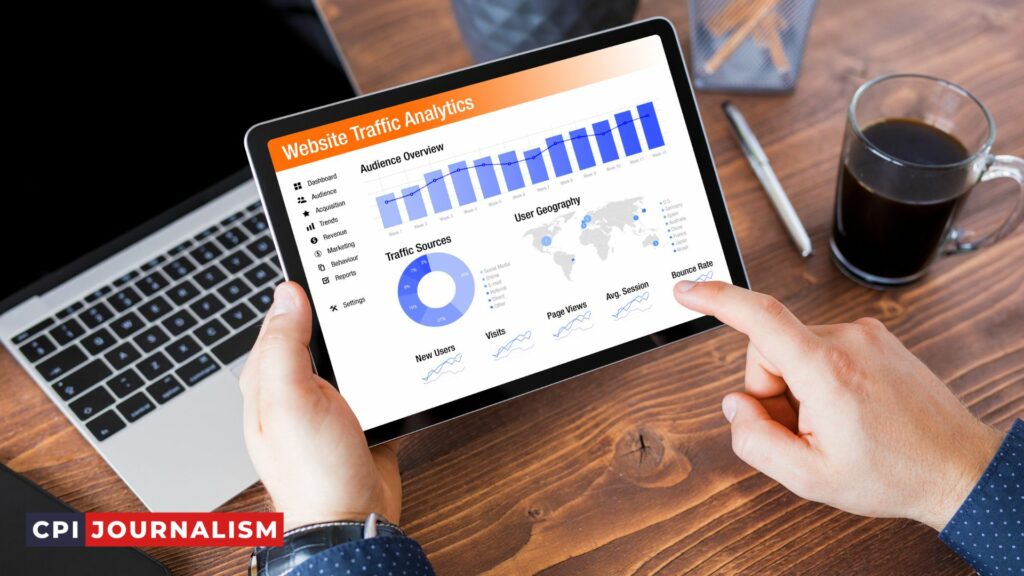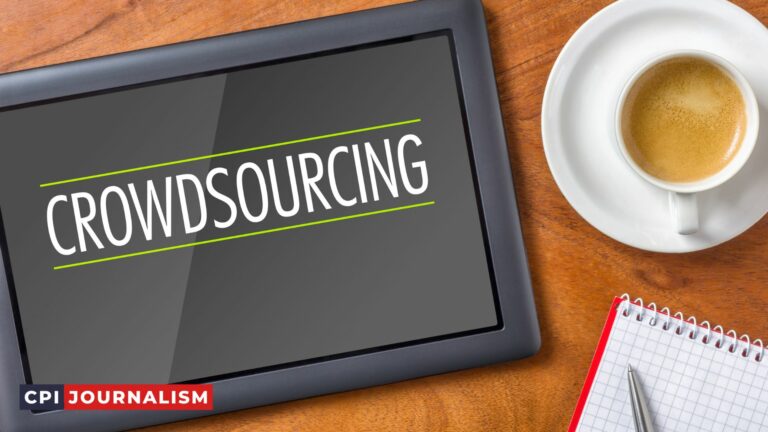How Can Journalists Manage and Analyze Large Volumes of Data in Their Investigative Work?
As an experienced journalist, I understand the importance of managing and analyzing large volumes of data in investigative work.
With the proliferation of digital data in the modern age, journalists must be well-equipped to handle vast amounts of information accurately and efficiently.
In this article, I will share my insights on how journalists can manage and analyze large volumes of data in their investigative work. I will discuss the tools and techniques that can be used to make the process easier and more efficient, as well as the importance of understanding the data you are working with.
With this knowledge, aspiring journalists will be better prepared to tackle the challenges of investigative journalism in the digital age.
A. Definition of Data Analysis
Data analysis is the process of collecting, organizing, and interpreting data to gain insights from it. It involves breaking down large amounts of data into smaller, more manageable pieces and then analyzing them to discover patterns, trends, and relationships.
In journalism, data analysis is especially important for investigative work. It allows reporters to uncover hidden stories and gain a deeper understanding of complex issues.
Data analysis involves several steps, such as data collection, data cleaning, data transformation, and data visualization. Through data collection, data analysts can compile the raw data they need to analyze and interpret.
Data cleaning is the process of removing any errors or inconsistencies in the data. After that, data transformation is used to combine and organize the data into meaningful information. Finally, data visualization is used to present the data in an easy-to-understand format.
Data analysis is an invaluable tool for journalists who want to investigate and report on complex topics. It can help reporters uncover hidden stories and gain a deeper understanding of the issues they’re reporting on.
Data analysis can also be used to understand the patterns and trends of a particular issue, allowing reporters to develop informed and accurate stories.
B. Overview of the Challenges Journalists Face When Managing and Analyzing Large Volumes of Data
Journalists who investigate using large volumes of data face an array of challenges that can be difficult to overcome.
For starters, it can be difficult to identify the right sources of data and to ensure its accuracy. Verifying the provenance and accuracy of data is an essential step, as untrustworthy data can undermine the entire investigation.
In addition, journalists must often navigate complex datasets, which can be overwhelming and time-consuming. Journalists may struggle to make sense of the data, which can often be organized in confusing ways.
Furthermore, it is essential for journalists to be able to analyze and interpret the data, which can be challenging for those who are not well-versed in data handling and analysis.
Finally, managing and analyzing large volumes of data can be expensive. Journalists may need to purchase or rent access to expensive software, hire a data expert to assist with the analysis, or pay for cloud storage to store the data securely. All of these costs can add up quickly.
For journalists who are investigating using large volumes of data, it is essential to be aware of the challenges they may face.
With proper planning, preparation and knowledge, however, these challenges can be overcome, making it possible to successfully manage and analyze large volumes of data in their investigative work.
C. Benefits Of Data Analysis For Investigative Journalism
Data analysis can be a powerful tool for investigative journalism, allowing reporters to uncover stories that would otherwise remain hidden. It can be used to reveal patterns and trends that are not obvious and to help identify potential sources of information.
Data analysis can also help journalists to verify information and increase the accuracy of their reporting.
One of the most beneficial aspects of data analysis for investigative journalism is the ability to identify connections between data sets.
By connecting data from different sources, reporters can often uncover stories that would not have been possible without data analysis. For example, data analysis can help identify links between people, companies and events that may have been previously unknown.
Data analysis can also be used to identify sources of information. By analyzing data, reporters can often identify potential sources that may have valuable information.
Additionally, data analysis can help reporters identify trends and patterns that can be used to create stories or inform investigative journalism.
In conclusion, data analysis is a valuable tool for investigative journalism. By analyzing data, reporters can uncover stories that would otherwise remain hidden, verify information and increase the accuracy of their reporting, and identify potential sources of information.
Data analysis can help reporters uncover stories that are not obvious and connect data from different sources to create compelling stories.
II. Strategies for Managing and Analyzing Large Volumes of Data
Journalists have to be well-equipped to manage and analyze large volumes of data in their investigative work.
Here are some strategies to make it easier:
1. Use Automated Data Processing Tools: Automated data processing tools such as Tableau, Microsoft Power BI, and SAS can help journalists manage and analyze large volumes of data quickly and accurately.
These tools are easy to use and can help journalists quickly identify patterns and trends in data, which can be useful in investigative reporting.
2. Utilize Data Visualization Techniques: Data visualization techniques such as charts, maps, and graphs can help journalists better understand large volumes of data.
Data visualization tools such as Tableau, Microsoft Power BI, and SAS can help journalists create visually appealing charts, maps, and graphs that can help them make sense of the data they have collected.
3. Take Advantage of Open Source Data: Open source data such as government data, social media data, and weather data can be used in investigative journalism. Journalists can use these data sources to gain insights that can inform their reporting.
4. Develop a Systematic Approach: Developing a systematic approach to data analysis can help journalists make sense of large volumes of data. Journalists can use a step-by-step approach to analyze data and identify patterns and trends.
5. Leverage Machine Learning: Machine learning can help journalists automate data processing tasks, such as identifying patterns and trends in data. Machine learning algorithms can be used to quickly identify patterns and trends in data, which can be useful in investigative reporting.
6. Analyze Data Using Statistical Methods: Statistical methods such as regression analysis, correlation analysis, and time series analysis can help journalists better understand large volumes of data. These methods can help journalists uncover relationships between variables and identify trends in data.
By utilizing these strategies, journalists can better manage and analyze large volumes of data in their investigative work. With the right tools and techniques, journalists can uncover new insights from the data they have collected and use it to inform their stories.
A. Utilizing Data Visualization Tools
Data visualization tools offer an important resource for journalists who are attempting to manage and analyze large volumes of data in their investigative work. Data visualization tools can help to quickly identify patterns, uncover trends, and identify outliers within a dataset.
Such tools can also be used to create compelling visual stories from data, which can help to bring complex topics to life for the reader or viewer.
When selecting a data visualization tool, journalists should consider the type of data they are working with, the level of complexity of the data, and the desired end results of their work.
For example, if the goal is to create an interactive map or timeline, then a tool that specializes in this type of visualization may be the best choice. For simpler visualizations such as bar charts or line graphs, a more general purpose tool may be more suitable.

To get the most out of a data visualization tool, journalists should also consider their own level of comfort and familiarity with the tool.
If a tool is too difficult to use, then it can become a barrier to success. Fortunately, many data visualization tools are relatively easy to use, even for those with limited technical experience.
Overall, data visualization tools can be an invaluable aid for journalists who are attempting to manage and analyze large volumes of data in their investigative work.
By selecting the right tool and taking the time to become familiar with it, journalists can create visualizations that bring complex topics to life and tell a compelling story.
B. Leveraging Automation
In the digital age, automation is a powerful tool that journalists can use to make their investigative work more efficient and effective.
Automation can reduce the time it takes to manually process and analyze large volumes of data by streamlining common processes such as data extraction, data cleansing, data wrangling, and data visualization.
Automation can also help journalists discover patterns and trends in data that would otherwise be difficult to detect. For example, natural language processing (NLP) algorithms can be used to uncover themes and topics from text data, and machine learning models can be used to detect anomalies or outliers in large datasets.
The key to effective automation is to identify the right tools for the job. There are many open-source and commercial software tools available that can automate different types of investigative tasks.
For example, Python, R, and Tableau are popular open-source tools that can be used for data wrangling and visualization, and BigQuery and AWS Athena are popular cloud-based tools for querying large datasets.
It is important to note that automation should be used with caution, as it can lead to errors and omissions if not used correctly.
It is also important to note that automation can only take journalists so far – it cannot replace the skills and knowledge that come with experience.
However, when used correctly and in combination with other investigative techniques, automation can be a powerful tool for investigative journalists.
C. Developing a Systematic Approach
Developing a systematic approach to managing and analyzing large volumes of data is essential for journalists.
This approach should include the following steps:
1. Begin by determining the goal of the investigation. This will help you to identify what data you need to collect, as well as the questions you need to ask.
2. Decide which sources of data you will use. This will depend on the specific topic and the type of data you need. Sources can include government reports, surveys, interviews, and public records.
3. Collect and organize the data. This can involve sorting, categorizing, and organizing the data into useful and meaningful formats, such as spreadsheets or databases.
4. Analyze the data. This can involve looking for patterns, trends, correlations, and other insights that can help answer your investigative questions.
5. Present your findings. This will involve summarizing your findings in a clear, concise, and compelling way that your audience can understand.
By following these steps, journalists can ensure that they are using a systematic approach to managing and analyzing large volumes of data in their investigative work. This can help them produce more accurate and insightful results.
III. Benefits of Data Analysis for Investigative Journalism
One of the most significant benefits of data analysis for investigative journalism is the ability to uncover hidden trends and patterns in data.
Data analysis helps journalists to identify anomalies or irregularities in data sets that may signal a potential story. For example, by analyzing financial data, journalists may uncover potential evidence of misappropriation of funds or other forms of financial misconduct.
Data analysis also helps journalists to uncover relationships between different entities or individuals that may be difficult to discover through traditional investigative methods.
For example, by analyzing public records, journalists may be able to uncover connections between seemingly unrelated individuals or events that could further an investigative story.
Data analysis also helps journalists to gain insights into complex topics or to identify potential areas for further investigation.
For example, by analyzing survey data, journalists may be able to identify which topics are of most interest to the public, or which topics are receiving the most attention from policymakers.
Finally, data analysis can help journalists to effectively communicate the results of their investigations to their audience. By visualizing data, journalists can easily convey the results of their investigations in an easy-to-understand format.
This can help to ensure that the audience is able to fully understand the results of the investigations, and can help to ensure that the story has maximum impact.
A. Improved Accuracy
As investigative journalists, it is our responsibility to ensure that the data we are using is as accurate as possible. In order to achieve this, there are several steps that can be taken.
First, we should always use reliable sources. We should make sure to double-check the accuracy of the information we are gathering and be aware of any potential bias that might be present in the data.
Additionally, we should also make sure to verify the data by speaking to sources on the ground and cross-checking our findings with other sources.
Second, we need to understand the context of the data. It is essential that we have a clear understanding of the source of the data and any potential nuances that could be present.
Moreover, we need to be aware of any potential discrepancies between the data and the actual situation on the ground.
Third, we should always use the most up-to-date data. We should ensure that the data we are using is as current as possible, and if there is any doubt regarding the accuracy of the data, we should err on the side of caution.
Finally, we should always use the most effective tools and techniques for analyzing the data. This includes using the right software, such as spreadsheets, databases, and visualization tools, to properly organize and analyze the data.
Additionally, we should also consider using analytics and machine learning techniques to uncover more complex patterns and trends in the data.
By following these steps, we can ensure that we are using the most accurate data possible for our investigative work. This will help us to uncover the truth and bring clarity to any potential issues we may be investigating.
B. Increased Efficiency
As an experienced journalist, I understand the challenges associated with managing and analyzing large volumes of data. Fortunately, there are a few steps that can be taken to increase efficiency when dealing with this type of work.
The first step is to understand the data. This means having a clear idea of the data set that you are working with, including the type of data, sources, etc. Once you have a better understanding of the data, you can then begin to apply various techniques to make the data easier to work with.
The second step is to utilize the right tools. There are a variety of tools available to journalists that can help them manage and analyze their data, including spreadsheets, databases, and other specialized software.
Knowing which tool is best suited to the task at hand can help streamline the process and make it easier to manage and analyze large data sets.
The third step is to automate processes where possible. Automating repetitive tasks can help save time and effort, freeing up more time to focus on the investigative work.
This could include utilizing scripts to automate certain tasks, or using software to help automate and streamline certain processes.
Finally, it is important to stay organized. When dealing with large amounts of data, organization is key. Having a clear workflow that is easy to follow and understand can help make sure that the data is being managed and analyzed correctly.
By following these steps, journalists can increase their efficiency when managing and analyzing large volumes of data in their investigative work.
C. Enhanced Storytelling
The best investigative journalism stories are those that have the ability to captivate the reader, and large volumes of data can be used to enhance this storytelling.
When working with large volumes of data, it is important for journalists to take a step back and consider how the data can be used to create a compelling story.
This can be done by analyzing the data and finding patterns, creating visualizations and using data tools such as infographics to make the story more accessible.
In addition to this, journalists should also think about how the data can be used to help build the narrative. By taking a close look at the data, journalists can identify trends and interesting statistics that can be used to highlight an issue or tell a story in an engaging way.
Furthermore, journalists can also use the data to add more context and nuance to a story, as well as verify facts and claims.
Finally, journalists should also think about how to make the story more interactive. By including interactive features such as polls, quizzes and timelines, journalists can engage readers and make the story more engaging.
This can also encourage readers to explore the data further and find new and interesting insights.
IV. Challenges of Data Analysis for Investigative Journalism
Investigative journalism requires careful and thorough analysis of large amounts of data, and this can often be a daunting task.
Here are some of the key challenges of data analysis for investigative journalism that journalists should be aware of:
1. Time: Investigative journalism often requires journalists to analyze large volumes of data in a limited amount of time. As a result, it can be difficult to thoroughly comprehend and analyze all the data before the story needs to be published.
2. Data Sources: It can be difficult to collect data from reliable sources, as well as verifying the accuracy of data. It is important for journalists to ensure that data is coming from reliable sources and is accurate.
3. Data Quality: Data can often be incomplete or contain errors, which can make it difficult to analyze and draw meaningful conclusions. It is important for journalists to ensure that the data is of high quality.
4. Data Visualization: Data can often be hard to interpret, making it difficult to draw meaningful conclusions. Journalists need to be able to effectively visualize data to make it easier to understand.
5. Data Analysis: Analyzing large amounts of data can be a complex task. Journalists need to be familiar with data analysis techniques in order to effectively analyze data. Additionally, they need to be able to identify patterns and draw meaningful conclusions from the data.
These are just some of the challenges of data analysis for investigative journalism that journalists should be aware of in order to be successful in their work.
With the right tools and techniques, journalists can effectively manage and analyze large volumes of data in their investigative work.
A. Accessing Data
As a journalist, accessing data is the first and most important step in your investigative work. While many datasets are available for public use, some of the most valuable information can be hard to access. In these cases, it is important to know how to access the data in a safe and legal way.
The first step is to determine if the data is public or private. Public data, such as census data, is freely available online or through government agencies.
Private data, such as company financials, may require special permission or access to proprietary systems. It is important to be aware of the legal implications of accessing private data, as even with permission, there are limits to its use.
Once you have determined that the data is accessible, you need to decide how to acquire it. If the data is publicly available, you can download it from the source or use a third-party tool to access it.
If the data is private, you may need to request access from the owner. In some cases, you may need to negotiate access rights or fees.
Once you have acquired the data, you need to ensure that it is in a usable format. If the data is in a text or spreadsheet format, you can use data analysis tools to transform it into a format that can be easily understood and manipulated.
If the data is in an image or PDF format, you may need to use optical character recognition (OCR) software to transform it into a text-based format.
Finally, you need to consider the security implications of the data. If the data contains sensitive information, you may need to take extra steps to protect it, such as encrypting it or limiting access to only trusted individuals.
By taking the time to properly access and secure your data, you can ensure that you are able to work with the most accurate and up-to-date information in your investigative work.
B. Data Quality
When dealing with large volumes of data in investigative work, it is important to ensure that the data is of good quality. Data quality refers to the accuracy and consistency of the data. Poor data quality can lead to inaccurate results, which can be detrimental to an investigation.
To ensure data quality, journalists should take the following steps:
1. Validate the accuracy of the data. When dealing with large datasets, it is important to check for errors. Double-check that the data is valid and accurate, and make sure to note any discrepancies and inconsistencies.
2. Check for completeness of the data. Make sure that all relevant data has been collected and is included in the dataset.
3. Look for patterns and trends. Analyze the data to identify any patterns or trends, and make sure to note any outliers or anomalies.
4. Double-check for accuracy. After any analysis, it is important to double-check the results to make sure that the data is still accurate.
By following these steps, journalists can ensure that the data they are using is of good quality and can be relied upon for their investigations.
C. Data Security
Data security is of the utmost importance for investigative journalists. When dealing with sensitive information, there are a few steps that can be taken to ensure that the data is secure.
First and foremost, journalists should use encrypted storage for their data. This way, if the data is ever accessed by an unauthorized person, it can’t be read. Encryption also adds an extra layer of security that can help to deter potential hackers.
Second, journalists should use a secure connection when accessing and sending data. This can be done through a Virtual Private Network (VPN) or a secure connection like HTTPS. This will ensure that the data is transmitted securely and that the connection is not easily intercepted.

Finally, journalists should be aware of their physical environment when managing data. This means making sure that their devices are secure, that their data is not left in a public place, and that they are aware of who might be accessing their data.
By taking these steps, journalists can ensure that their data is secure and that they are not putting themselves at risk.
V. Conclusion
In conclusion, data journalism is an invaluable tool for investigative journalists. By using data-driven techniques, journalists can gain insights into complex stories and uncover hidden truths. This can lead to uncovering stories that would have otherwise gone unnoticed.
The challenge is to manage and analyze large volumes of data in an efficient manner. Fortunately, there are now a variety of tools and techniques available to help journalists manage and analyze data.
Journalists should be sure to take full advantage of these tools in order to maximize the potential of their investigative work.
A. Summary of Benefits and Challenges of Data Analysis for Investigative Journalism
Data analysis is one of the most powerful tools available to investigative journalists. When utilized correctly, it can help uncover hidden truths, uncover corrupt practices, and provide an in-depth understanding of complex topics.
However, data analysis comes with its own set of challenges. This section provides an overview of the benefits and challenges of data analysis for investigative journalism.
Benefits
Data analysis is a powerful tool for investigative journalists because it allows them to uncover patterns, trends, and correlations that would otherwise go unnoticed.
It can also provide a detailed understanding of complex topics by breaking them down into smaller, more manageable pieces. Additionally, data analysis can help journalists uncover hidden truths, expose corrupt practices, and provide evidence for their stories.
Challenges
Data analysis for investigative journalism can be a time-consuming and labor-intensive process. It requires a great deal of skill and knowledge to successfully analyze and interpret large amounts of data.
Additionally, the quality and accuracy of a journalist’s analysis depends heavily on the quality of the data they are working with.
Poorly structured data or data of poor quality can lead to inaccurate results and conclusions. Finally, data analysis requires the journalist to be able to identify correlations and patterns within the data. This requires strong data analysis skills and the ability to think critically and logically.
Overall, data analysis is a powerful tool for investigative journalism, but it comes with its own set of challenges. Journalists need to be aware of the benefits and challenges of data analysis in order to make the most of this powerful tool.
B. Recommendations For Journalists
1. Learn the fundamentals: As a journalist, it is important to understand the basics of data analysis and management. It is wise to have a basic understanding of the core principles of data management, such as data manipulation, data exploration, data visualization, and data mining.
It is also important to have a clear understanding of the various tools available for data analysis and management.
2. Utilize available resources: Journalists can benefit from the numerous data analysis and management tools available online. A wide range of tools exist, such as spreadsheets, databases, and statistical software. These tools can be used to help journalists manage and analyze large volumes of data.
3. Identify relevant data: It is important to identify the data that is most relevant to the story being investigated. This can be done by examining the data and determining which pieces of information are necessary for the story.
4. Develop a data collection plan: Journalists should create a plan for collecting the necessary data. This plan should include the sources of data, the methods of data collection, and the timeline for collecting the data.
5. Organize the data: Journalists should organize the data in a way that makes it easier to analyze. This may include sorting the data by certain criteria, creating a data dictionary, or using a spreadsheet to help organize the data.
6. Develop a strategy for analysis: Journalists should develop a strategy for analyzing the data. This may include creating graphs and charts to help visualize the data, using statistical methods to analyze the data, or using machine learning algorithms to identify patterns and make predictions.
7. Share the results: Journalists should share their results with the public. This may include writing articles about the findings, creating infographics, or hosting a webinar to discuss the findings. It is important to make sure that the results are presented in an accurate and clear manner.
C. Final Thoughts
As a journalist, it’s essential to be able to effectively manage and analyze large volumes of data in your investigative work. Data analysis can often be overwhelming, but it is a vital skill in the modern journalism landscape.
To be successful, it’s important to be organized and efficient in your data management, and to understand the various tools and techniques that can help you to analyze and get the most out of your data.
The most important thing to remember is to take your time and be thorough in your approach. It’s easy to become overwhelmed when dealing with large amounts of data, but it’s important to stay calm and methodical. With the right approach, you can make sure that your data analysis is accurate and reliable.
Finally, don’t be afraid to ask for help if you need it. There are a number of resources available to journalists that can provide assistance with data management and analysis, so don’t be afraid to reach out for guidance if you’re feeling stuck.
With the right help and resources, you can make sure that your data analysis is as effective and accurate as possible.







